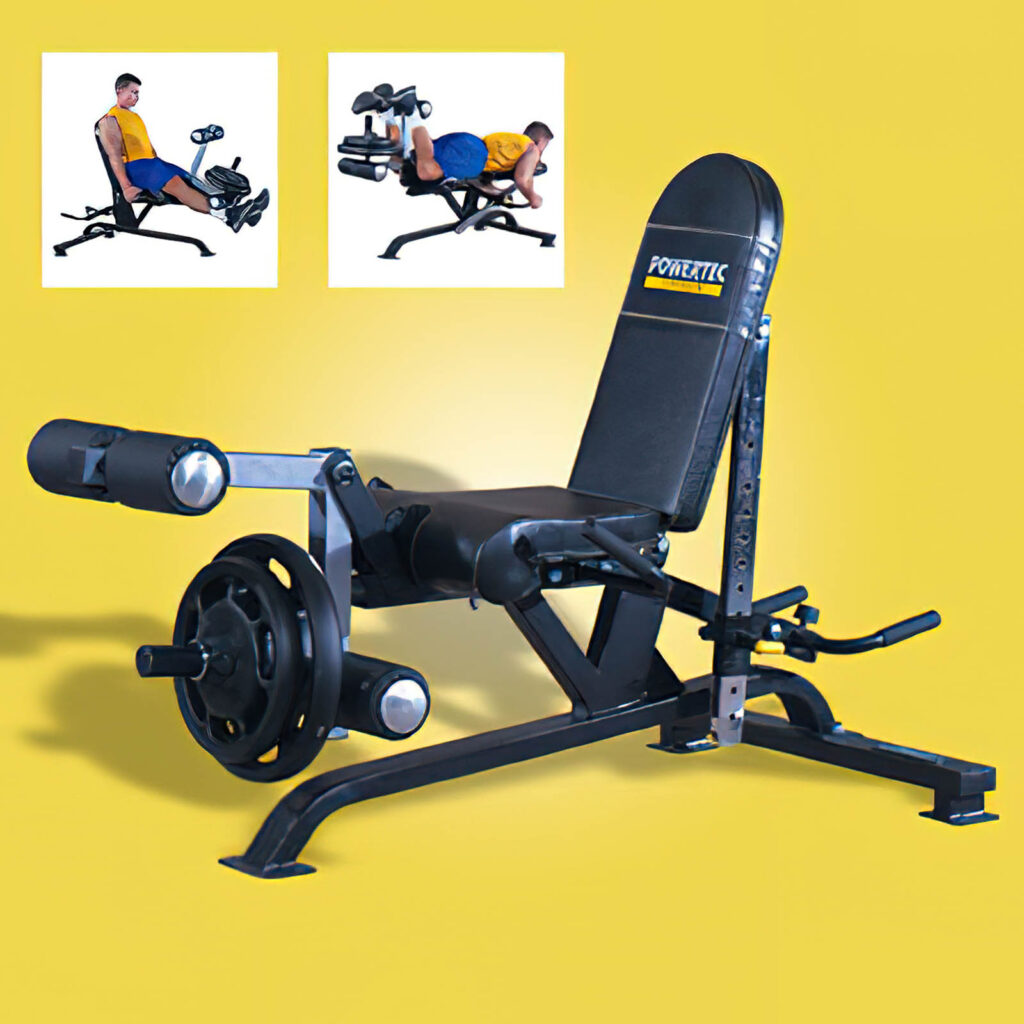Powertec Leverage Leg Extension/Curl L-LEC
Writing about the Powertec Leverage Leg Extension/Curl brings a tear to my eyes. It is a real story about what could have been. After personally witnessing how popular a plate loaded leg extension leg curl machine could be, I feel Powertec made a mistake by removing this machine from their range.
The Leverage Leg Extension/Curl was discontinued not long after I started my relationship with Powertec. I am not sure about the exact date, but I know for sure that it was not in the 2008 line up. My guess was that an attempt to reduce inventory. Steering people toward the Powertec Utility Bench with a leg lift attachment.
What I do remember is that I held onto the machine that I had in the showroom for a while. It was a great machine that did both exercises well. It was easier to have a dedicated machine on which I could easily jump on and train. Versus having to put the leg extension attachment into a bench.

Original Powertec Leverage Leg Extension/Curl Machine Listing
Powertec has had many requests for this machine over the past few years. The Leverage Squat Calf is a tough act to follow but when it comes to refining and shaping the legs there is no better machine then the Leverage Leg extension/curl machine.
The extension trains the entire thigh while the leg curl works the hamstrings and buttocks. An adjustable contoured seat and back pad are incorporated to fit all size users for both exercises. Important features like dual hand grips for both the extension and curl are built in for total comfort and security during the exercise. The frame design has a sleek yet strong look. A must have piece for every home or light commercial setting.
Specifications:
Model # L-LEC
L=188cm W=77cm HT=102cm WT=67kgs
Weight load capacity =159kgs
Final Word
For years I suggested that Powertec should re-introduce this piece. With hindsight and my experience selling the ATX version I would have pushed harder. Powertec seemed to have higher minimum production quantities for machines. This meant they had to produce high quantities of such niche pieces. This ties up a lot of capital. So I understand this decision.
